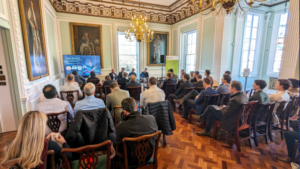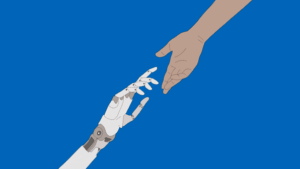
Public sector digital transformation: What government needs to consider in 2020
A new decade signals a new dawn in digital government. The Conservative Party’s comfortable election victory and impending EU exit means the government has the majority in parliament and the need to make significant public sector reforms. And digital will play a vital role.
Whereas in the past incoming governments may have rearranged the deck chairs, it does feel like we’re on the cusp of some big changes — especially with the government promising an increase in spending.
One of those people driving for change within the government circles is the Prime Minister’s chief special adviser, Dominic Cummings. Cummings has plotted an overhaul of the civil service and talked about how important “data science, AI and cognitive technologies” will be in this government.
But in order to do the above well you need good data — and that’s lacking in government. Much of government data is manual and trapped in old legacy systems – accessing that data and cleaning it to make it usable will be messy, if not impossible. And that’s even before we look at how to interpret the data and whether there is even any appetite to act on it (do facts change beliefs?)
What the government needs to do, and looks like might have the appetite to do, is to encourage a digital reinvention of the public sector; it has to reimagine what it does.
Here are three things it needs to do to get moving in the right direction.
Starting from the ground up
For the government to deal with current challenges, it cannot patch things up or put a shiny face on old systems. It has to have the correct foundation by investing and rebuilding from the ground up.
Look at Tesla. It doesn’t operate like a traditional carmaker. It looked at what the driving experience needs to be, and completely reimagined the car and the business model of selling a car. From building its own batteries to creating self-driving hardware and software that updates automatically, Tesla is a great example of how building from the ground-up allows you to create better services and innovate.
Existing siloed systems are poorly understood and complex. All too often they’re seen as too big, too hard and just not sexy enough to deal with. But government departments need to rip out these legacy and analogue ways of doing things.
As mentioned earlier, strengthening the UK’s underlying data infrastructure will help better utilise the emerging tech government wants to make more use of — i.e automation, Machine Learning and AI. Creating better systems and processes will help capture that much-needed data — the building blocks of innovation.
Tesla probably never thought it would end up selling insurance. But because it has created a car that collects data, it can utilise that information to offer tailored insurance packages. Suddenly, new opportunities open up.
Having a product mindset
To reinvent, you need to put in place the methodology first. How do you get there? Having a product mindset will help. What I mean by that is focusing on the needs of users, aiming for quick outcomes and iterating.
Having a product mindset means you truly understand the users’ needs and the problem you’re looking to solve, and then building, experimenting, testing and prototyping continuously to create better products.
The GDS’ Service Standard sees discovery as the start of a product lifecycle. When re-inventing a service, the initial discovery phase will help you understand the user, their needs and more about the problem area.
We undertake discovery on every product we work on to understand what steps need to be taken to reach the desired outcome.
We not only do this with clients, but we’ve taken this approach on ourselves too. We undertook a discovery on Zaizi to identify potential gaps. We realised, as a growing organisation, we had to change and see how we could work better.
Building a multidisciplinary team
To encourage the culture of having a product mindset — to understand the user, their needs, to experiment, test, build prototypes and foment a culture of iteration – you need a tight-knit team with varying skill sets.
Last year we talked about the importance of having the correct skills in an organisation. But even with those skills, if the team isn’t complementing each other and working efficiently, the speed of delivery and innovation suffers.
From our own experience, and from working with our clients, we see the importance of creating the correct blend of specialisms and a flexible mindset in teams.
We use multi-disciplinary teams that consist of “T-shape” people — those who specialise in one or two areas but can work broadly across all aspects of a product while standing up for their disciplines and communicating their ideas. Our teams have a product, not a project, mindset.
The Agile and DevSecOps approach has always allowed us to move quickly and put value in front of users, whilst ensuring security is baked in from the start.
Any multidisciplinary team needs to be given the support, tools, freedom and responsibility they need to come up with the right solutions and build better products.
Talented, settled teams perform well and improve together; giving slicker, faster outcomes and better innovation.
If you would like to find out how we can help you with any of the above, please get in touch and we’ll be happy to talk to you
Related content
-

From ScanApp to Lego demos — What you need to know about Security & Policing 2025
Published on: 1 April, 2025 -

Truth, trust and transformation — 4 key takeaways from Zaizi’s AI in government event
Published on: 14 March, 2025 -

Paris AI summit: Navigating the AI landscape and how SMEs can help UK government
Published on: 19 February, 2025 -

Border Force wins Global Customs Innovation Award for ScanApp — a solution Zaizi helped build
Published on: 14 February, 2025
